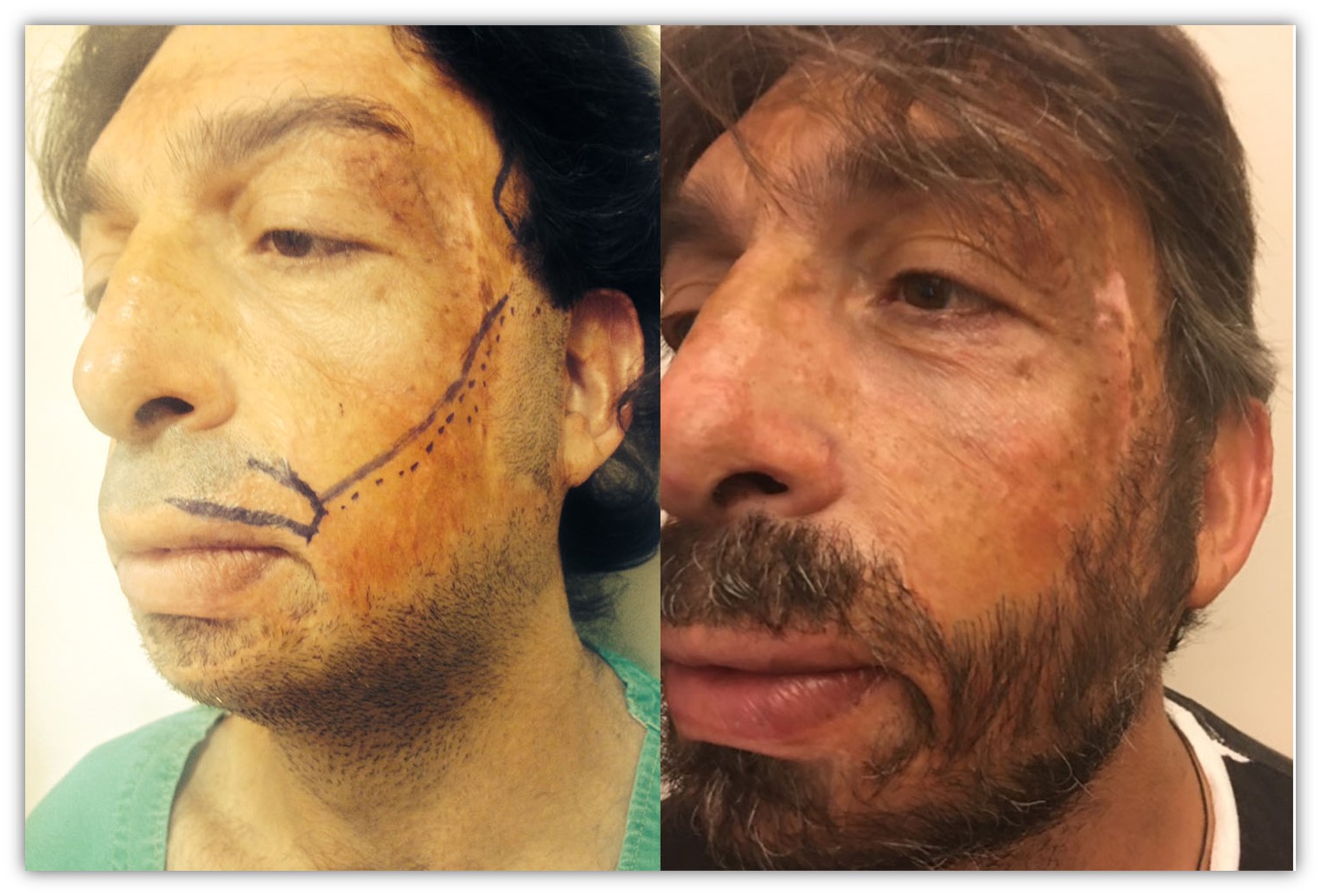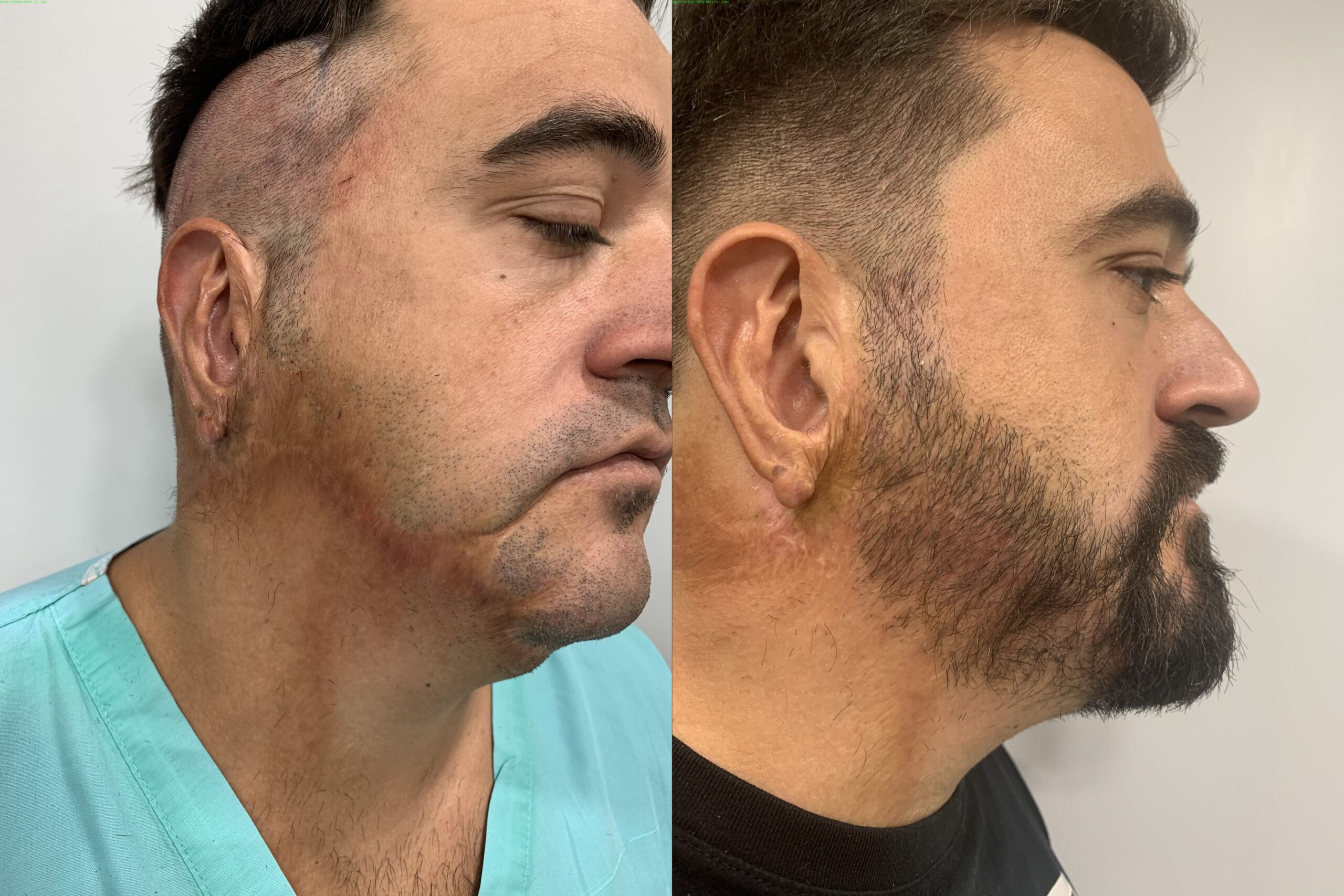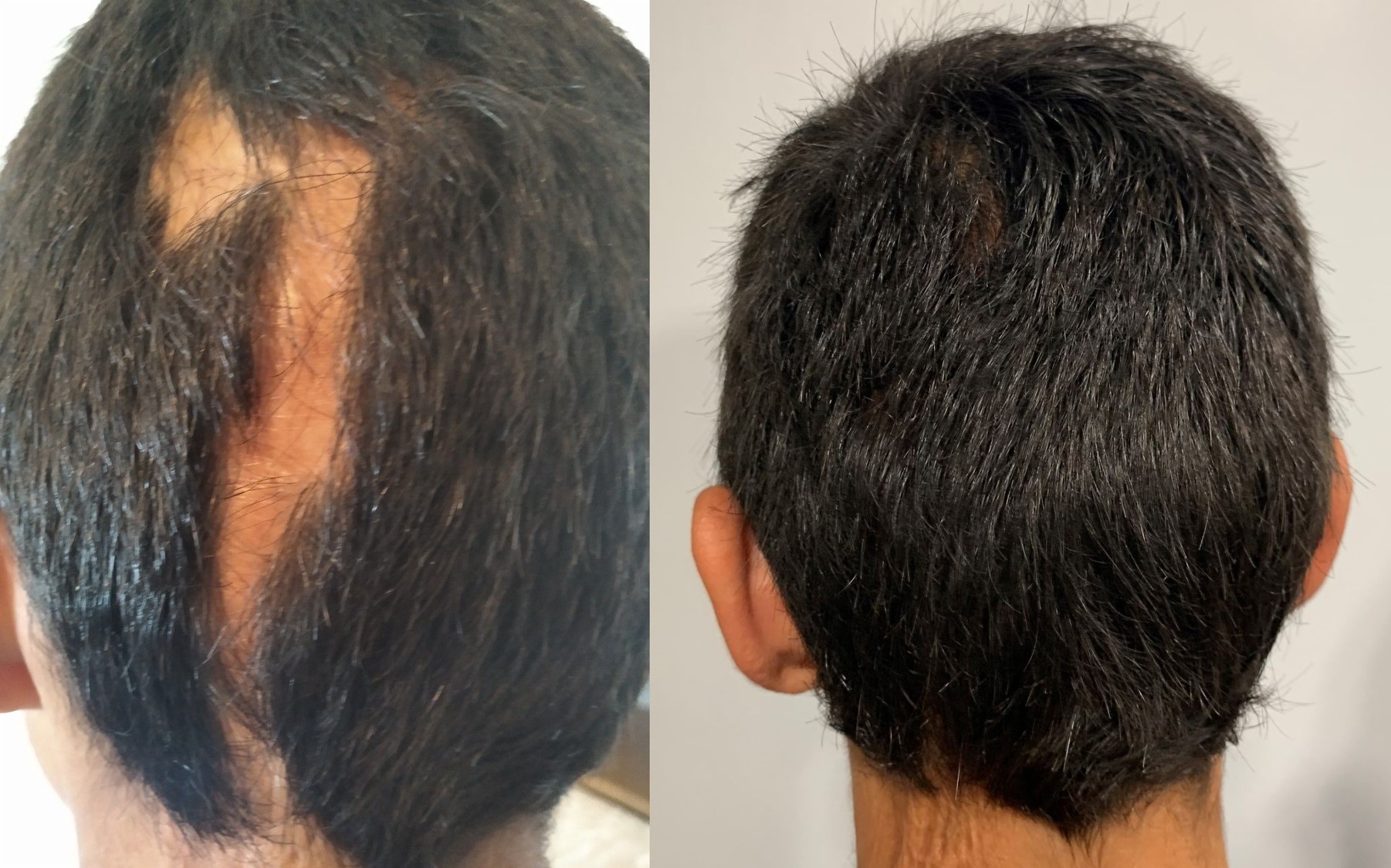The New F.U.E. Technique
THE 10 GREATEST ADVANTAGES OF THE F.U.E. TECHNIQUE
- Surgeries take place WITHOUT incision, WITHOUT stitches, and WITHOUT leaving any horizontal scar
- We are using transplants from the entire donor area
- The technique is ideal for improvement interventions following STRIP
- Ideal for hairline improvement (hair thickening and natural appearance)
- Ideal for donor areas with limited elasticity
- Absence of the feeling of tension and hypoesthesia (twitch) at the donor area caused by suturing the wound
- Easy, atraumatic and thicker adjustment of transplants with the use of a special implanter
- Minimal, if any, post-surgery pain
- It allows getting very short haircuts after surgery
- Easy and totally controlled procedure
In an age where everything has changed in surgery and all kinds of specialization have opted for minimally interventive surgery, our clinic could not but subscribe to this transformation in what has to do with hair transplants.
SUCCESS FACTORS WHEN USING THE F.U.E. TECHNIQUE
F.U.E. is s simple act of surgery, which nonetheless requires:
- Specialization, experience and aesthetic perception from the doctor’s part and his/her associates.
- A right estimate of the future prognosis of the hair loss.
- Sufficient time between surgeries, and not a constant series of surgeries.
- Getting transplants of the smallest possible Punch diameter.
- Individualized treatment: Each and every incident is unique and has to be treated by the doctor as a new challenge so that he/she may achieve an optimal result.
FUTURE PROGNOSIS
During the first information session, it is necessary to devise the future prognosis.
Based on his experience, of the macroscopic and the microscopic examination of the scalp, and on a consideration of the interested person’s medical history, the doctor have the capacity to make an assessment and provide an outline of the person’s final hair growth picture, that is, the picture when the hair loss progress will have been completed after a number of years has gone by. The final picture to emerge is the F.D.O. and it will form the basis for the following actions:
- Deigning the right and ideal hairline, which is from where the placement of transplants shall begin and from where their proper allocation should be made.
- Demarcation between stable and changing hair growth.
- Quality assessment of the donor area and of the amount of useful transplants that can be taken out of it.
- Determination of the size of the bald area, based on the changing hair growth area, so that transplants can be allocated ideally.
We can, therefore, see how important it is for doctors to have the experience and knowledge required so that they can devise a perfectly flawless Future prognosis, particularly for YOUNG AGE GROUPS and mostly during the first information session that they will hold with the interested person.
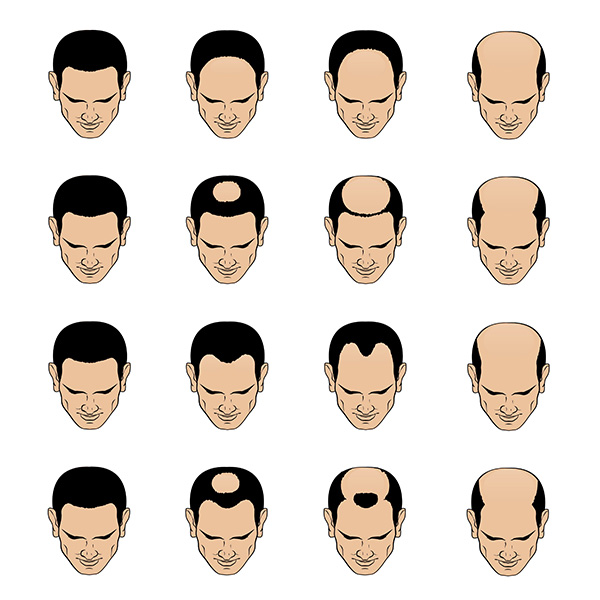
THE HAIR TRANSPLANT PROCEDURE
DONOR AREA
- The transplant procedure starts with the extraction of individual hair follicles out of the stable hair growth area by using a special Motorized Punch or a Manual Punch. Following this, the hair follicles are separated in groups according to number of hair that each one of them has.
- The preservation of transplants takes place in a specific temperature and by using a special nutrient solution.

RECEPTION AREA
- Front hairline design takes place in the area where the transplants are to be placed. In order to achieve an ideal design, one has to take under serious consideration both age and the future course of hair growth.
- The doctor recommends 2-3 designs to the interested person and they select the ideal one on a joint basis.
- Following local anaesthesia at the reception area, the doctors create the microscopic creations (site creation) in an atraumatic way and by using a special sapphire tool on the designated transplant zone.
- Finally, the hair follicles are transplanted one by one by using special Implanters.
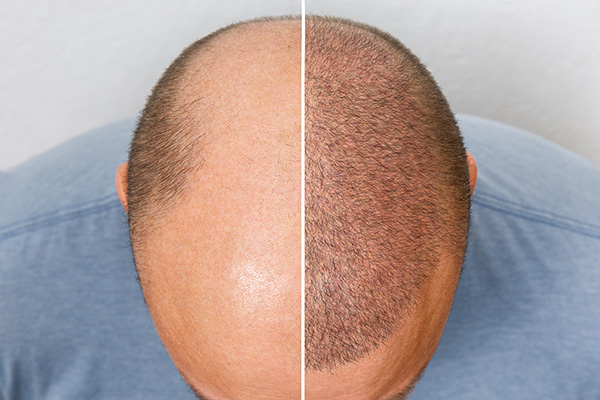
THE PARTIAL SHAVING SESSION
- Improvement or creation of a new hairline.
- Transplants concerning only temples.
- Thickening of sparse hair growth
- Women’s treatments
USING THE F.U.E. TECHNIQUE IN ORDER TO COVER SCARS
- Transplant to beards and eyebrows for thickening purposes
- Transplant to post-burn scars on beards and eyebrows
- In traction alopecia, following aesthetic plastic surgery (e.g. following face lifting)
- In order to cover scars at the scalp’s interior
CAN YOU BE A CANDIDATE?
There are certain standards that determine how successful a surgery can be for each particular person.
In order to provide you with an answer to the question whether you can undertake surgery and how good the outcome will be, we will have to examine thoroughly your particular case first.

